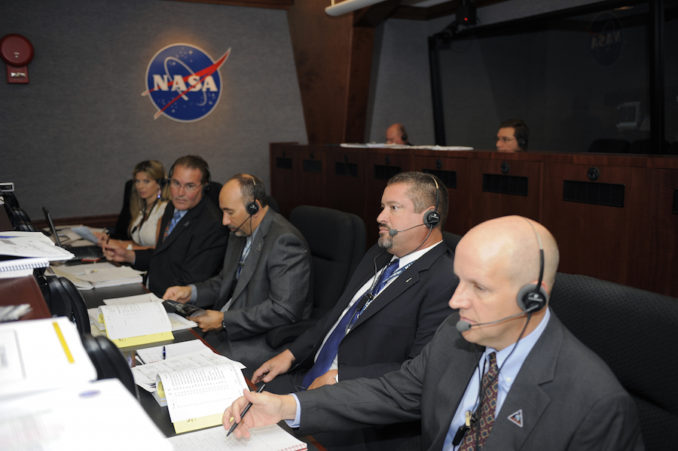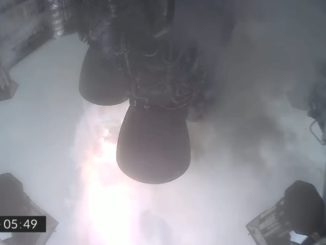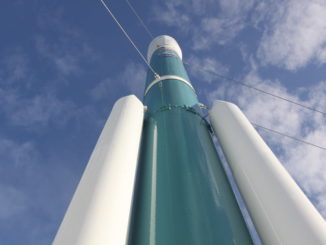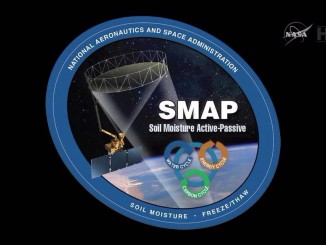EDITOR’S NOTE: Updated at 7:50 a.m. EDT (1250 GMT) after demolition.

The U.S. Air Force on Thursday demolished towers once used to assemble Delta 2 rockets at Cape Canaveral for missions to Mars, four dozen flights to deploy the GPS navigation network, and numerous launches with scientific, commercial and military payloads.
With the push of a button from Brig. Gen. Wayne Monteith, commander of the Air Force’s 45th Space Wing, the demolition occurred just after 7 a.m. EDT (1100 GMT) Thursday at the Complex 17 launch pad, where twin mobile gantries and fixed towers were toppled by explosives.
Located near the southern perimeter of the sprawling Cape Canaveral Air Force Station, Complex 17 is one of the Florida spaceport’s oldest launch pads, where 325 Thor and Delta boosters departed on missile tests and satellite deliveries from 1957 through 2011.
But the Delta 2 rocket which once launched from Complex 17 is nearing retirement. The Delta 2 last flew from Cape Canaveral on Sept. 10, 2011, with a pair of science probes to study the moon’s gravity field, and just one more Delta 2 launcher is left to fly in September from Vandenberg Air Force Base, California.
Built more than six decades ago at the dawn of Space Age, the twin launch pads at Complex 17 — known as pads 17A and 17B — hosted the launch of 48 Global Positioning Navigation satellites, propelling the space-based network from a military-only program to an everyday public utility.
NASA’s first three Mars rovers — Sojourner, Spirit and Opportunity — all departed from Complex 17 on Delta 2 rockets, along with MESSENGER mission which became the first spacecraft to orbit Mercury, the Spitzer Space Telescope, the Dawn mission to the asteroid belt, the planet-hunting Kepler observatory, several weather satellites, and dozens of commercial and military communications spacecraft.
Construction of Complex 17 began in April 1956 for the Thor ballistic missile program. The first Thor launch from pad 17B occurred in January 1957, followed the debut launch from pad 17A in August of the same year.
Delta rockets based on the Thor missile design started launching from Complex 17 in the 1960s, and management of the facility transferred between the Air Force and NASA several times over the following decades.
Meanwhile, the builders of the Delta rocket family changed names through multiple corporate mergers and acquisitions, beginning with the Douglas Aircraft Company, then succeeded by McDonnell Douglas, Boeing and United Launch Alliance, formed in 2006 by the marriage of Boeing and Lockheed Martin rocket programs.

Workers raised the height of the twin mobile towers at Complex 17 in the 1980s for the Delta 2 rocket, a workhorse launcher that has accomplished 154 missions since its maiden flight from Complex 17 on Valentine’s Day 1989. The Delta 2 has logged 152 successful missions in that time.
One of the Delta 2 failures in January 1997 littered Complex 17 with huge chunks of flaming debris after the rocket exploded 13 seconds after liftoff, destroying cars and office trailers near the launch pad’s blockhouse bunker, where more than 70 launch controllers escaped uninjured.
The launch towers sustained only light damage during the Delta 2 explosion, and flights from Complex 17 resumed four months later following repairs and an investigation into the accident. When the Delta 2 returned to service, members of the launch team moved to a control center farther from the launch pad.

Three liftoffs of Delta 3 rockets, a hybrid between the Delta 2 and the Delta 4 launchers, also occurred at pad 17B from 1998 through 2000.
Engineers have fond memories of launches at Complex 17, where 110 Delta 2 rockets left Earth until the facility was deactivated.
“Growing up on Delta 2, it was mostly a fairly confined team of a couple hundred folks down at Complex 17, a smaller team out west (at Vandenberg Air Force Base in California),” said Tim Dunn, a NASA launch director who served on the Delta 2 launch team at Boeing in the late 1990s before joining the space agency.
Dunn’s first mission as launch director was the last Delta 2 flight from Cape Canaveral in 2011.
“That one was very special,” he told Spaceflight Now in an interview.

Dunn worked on the Air Force’s Titan 4 rocket before moving to the Delta 2, a less expensive vehicle that could carry to space a fraction of the Titan 4’s lift capacity, but which ended up flying more often, and for more years.
“I went to the Delta 2, and it was a little smaller,” Dunn recalled in an interview with Spaceflight Now on the Delta 2’s coming retirement. “You could get your hands around the systems, and you could walk the tower a lot more easily, and the team that you were working with was kind of an order of magnitude smaller, so that made it feel more like family. That’s one of the things that I’ll miss.
“When you grow up and you invest so many years in a particular rocket, you really feel like you know it inside and out,” he said.
Since the final Delta 2 flight from Florida, crews have secured and removed ground equipment from Complex 17, ensured the area was clear of hazardous materials, and demolished the blockhouse in 2013.
NASA took control of Complex 17 after the Air Force launched its last Delta 2 mission from pad 17A in 2009, and the space agency kept launch pad 17B operational long enough to dispatch the GRAIL lunar probes to the moon in 2011.

Dunn said NASA and the Air Force completed their “closeout” of Complex 17 in 2016. Then attention turned to demolishing the launch pad’s towers, which the Air Force put off due to funding shortages.
The mobile towers at each Complex 17 launch pad provided protection of Delta 2 rockets and their payloads from the Florida weather, and gave workers access to the vehicle during assembly and launch preparations. The gantries were retracted away from the rocket during Delta 2 countdowns.
The fixed towers provided umbilical connections to Delta 2 rockets before liftoff.
Moon Express, a private firm developing a commercial lunar lander, has leased facilities from the Air Force at Complex 17 and neighboring Complex 18 for testing of its spacecraft. But the company does not need the Delta 2-era launch pad towers.
Monteith, the 45th Space Wing commander, said the demolition Thursday was an opportunity for new growth and innovation at the Florida launch base.
“This launch complex has seen 325 launches, almost 10 percent of all launches at the Cape,” he said. “Everything from Explorer, to the Mars rovers, to GPS, to include one of our most spectacur launch failures … We’re part of a learning organization driving to the future, and this is about innovation as this launch complex is now repurposed from Delta to Moon Express.”

In a tweet Wednesday, Moon Express chief executive and co-founder Bob Richards said future testing of the company’s lunar lander will take place at Complex 18.
“Personally, I love the towers and find them inspiring. The demo of the towers was pre-ordained when we licensed LC-17 & 18 from the USAF due to safety & other factors that require them to come down,” Richards wrote. “Our test activities will be taking place at LC-18.”
“For more than half a century, the twin towers of SLC-17 stood tall on the horizon of the Cape Canaveral Spaceport,” said Frank DiBello, president and CEO of Space Florida, a state agency charged with attracting aerospace businesses to Florida. “Together, they’ve hosted more than 300 launches and often marked the direction in which launch viewers would turn to witness history in the making.

“Tomorrow, those towers will be demolished,” DiBello said in a statement Wednesday. “That detonation will symbolize the ongoing renaissance and evolution of the Cape Canaveral Spaceport as we continue to transition further into the planet’s primary hub for commercial space activity. We look forward to making even more history with the latest tenant, Moon Express, and our other partners in building the bold new future of the commercial space marketplace.”
Email the author.
Follow Stephen Clark on Twitter: @StephenClark1.



